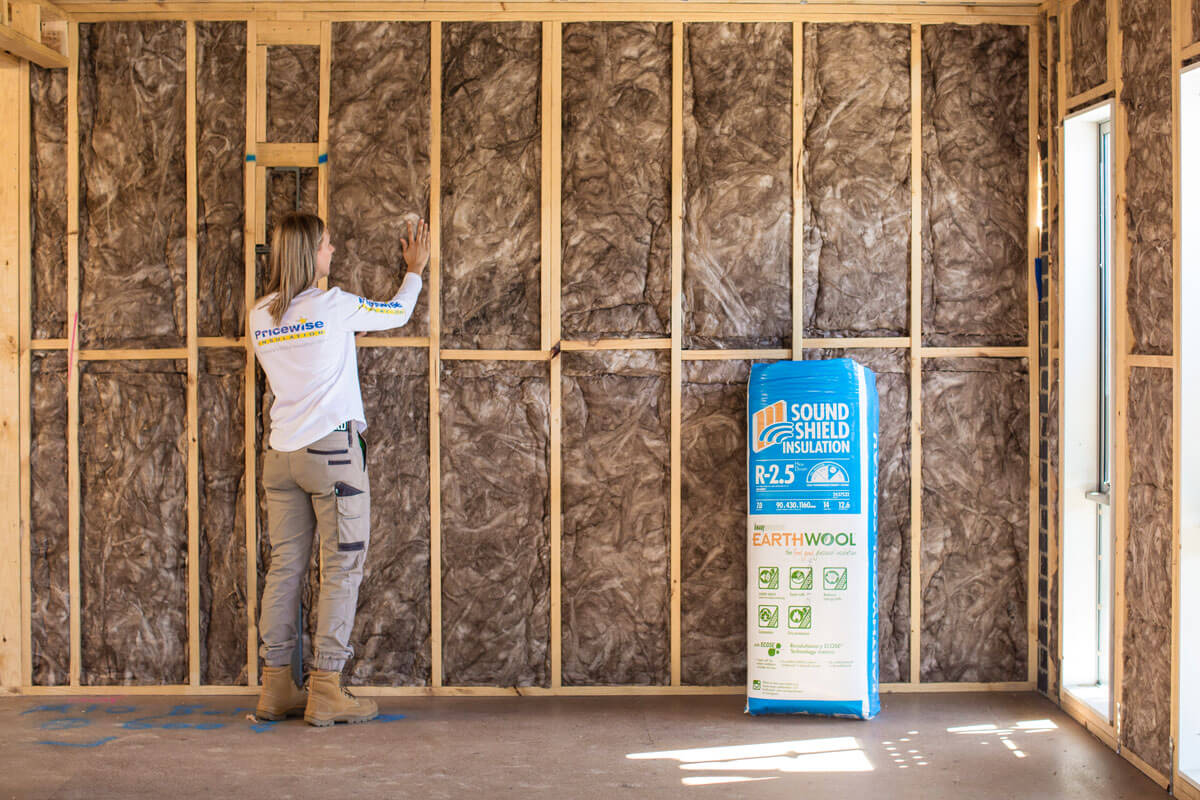Types of Insulation Materials for Interior Bathroom Walls: Best Insulation For Interior Bathroom Walls
/man-installing-insulation-182186960-583dfbb05f9b58d5b170a0ee.jpg)
Best insulation for interior bathroom walls – Selecting the right insulation material for interior bathroom walls is crucial to ensure optimal comfort, energy efficiency, and moisture resistance. Here’s a comprehensive guide to the various types of insulation materials available, their properties, and their advantages and disadvantages:
Fiberglass Batts and Rolls
Fiberglass batts and rolls are widely used for insulating bathroom walls due to their cost-effectiveness and ease of installation. They consist of glass fibers bonded together with a resin, offering decent R-values (typically R-3.1 to R-4.3 per inch). Fiberglass is moisture-resistant, making it suitable for humid bathroom environments. However, it can be irritating to handle and may release harmful particles if not properly installed.
In a bathroom, insulation is crucial for maintaining warmth and reducing noise. But why not combine functionality with style? Consider complementing your insulation with cheap farmhouse decor elements. These rustic touches, such as reclaimed wood shelves or galvanized metal accents, will create a cozy and inviting atmosphere while enhancing the insulation’s effectiveness.
Cellulose Insulation
Cellulose insulation is made from recycled paper and treated with fire retardants. It offers good R-values (R-3.5 to R-3.8 per inch) and is highly effective at absorbing sound. Cellulose insulation is also eco-friendly and moisture-resistant. However, it can be more expensive than fiberglass and may require professional installation.
For a cozy and energy-efficient bathroom, selecting the best insulation for interior bathroom walls is crucial. Consider factors like moisture resistance and R-value to ensure optimal performance. If you’re planning to tile your bathroom walls, refer to this guide for expert tips on starting the process.
Once the tiling is complete, don’t forget to address the insulation to prevent heat loss and moisture buildup.
Spray Foam Insulation
Spray foam insulation is applied as a liquid that expands and hardens into a foam, creating a seamless and airtight seal. It offers excellent R-values (R-6 to R-7 per inch), superior moisture resistance, and soundproofing capabilities. However, spray foam insulation is more expensive than other options and requires professional installation.
Mineral Wool Insulation
Mineral wool insulation is made from molten rock or slag and is available in batts, rolls, or loose-fill form. It offers good R-values (R-3.3 to R-4 per inch), is moisture-resistant, and fire-resistant. Mineral wool is more expensive than fiberglass but is less irritating to handle.
Factors to Consider When Choosing Insulation for Interior Bathroom Walls

When selecting insulation for interior bathroom walls, several key factors must be considered to ensure optimal performance and longevity. These factors include:
– Moisture levels: Bathrooms are prone to high levels of moisture due to showers, baths, and other water-related activities. Insulation materials must be resistant to moisture to prevent mold growth, rot, and deterioration.
– Temperature fluctuations: Bathrooms experience significant temperature fluctuations, especially during cold seasons. Insulation helps maintain a consistent temperature, reducing energy consumption and improving comfort.
– Space constraints: Bathrooms are often small spaces, making it crucial to choose insulation materials that are thin and space-saving. Thin insulation allows for more usable space without compromising insulation effectiveness.
Prioritizing these factors depends on specific bathroom conditions. For bathrooms with high moisture levels, moisture resistance should be the primary consideration. In cold climates, temperature control becomes more important. Space constraints should be considered in smaller bathrooms where every inch of space is valuable. By carefully evaluating these factors, homeowners can select the best insulation for their interior bathroom walls, ensuring comfort, energy efficiency, and durability.
Installation Methods for Insulation in Interior Bathroom Walls
/FiberglassInsulationwall-GettyImages-104295008-fcf109c9562c4e07af9ca068d557df8f.jpg)
Installing insulation in interior bathroom walls is a crucial step in maintaining a comfortable and energy-efficient bathroom. Several methods can be used, each with its own advantages and disadvantages. Understanding these methods will help you make an informed decision about the best approach for your specific needs.
Spray Foam Insulation
Spray foam insulation is a popular choice for interior bathroom walls due to its excellent insulation properties and ability to seal air leaks. It is applied as a liquid that expands and hardens into a foam, filling all gaps and cavities.
Pros:
– Excellent insulation value
– Seals air leaks
– Moisture-resistant
Cons:
– Requires specialized equipment and training to install
– Can be more expensive than other methods
Batt Insulation, Best insulation for interior bathroom walls
Batt insulation is a pre-cut insulation material made from fiberglass, cellulose, or mineral wool. It is installed between the studs in the wall and held in place with friction or wire mesh.
Pros:
– Easy to install
– Affordable
– Available in various R-values
Cons:
– Not as effective as spray foam at sealing air leaks
– Can absorb moisture
Loose-Fill Insulation
Loose-fill insulation, such as cellulose or fiberglass, is poured or blown into the wall cavity. It fills all gaps and crevices, providing excellent insulation.
Pros:
– Conforms to irregular shapes
– Easy to install
– Affordable
Cons:
– Can settle over time
– Can be messy to install
Rigid Foam Insulation
Rigid foam insulation is a pre-cut foam board that is installed directly against the studs or sheathing. It provides excellent insulation and is moisture-resistant.
Pros:
– High R-value
– Moisture-resistant
– Easy to install
Cons:
– Can be more expensive than other methods
– Requires precise cutting to fit